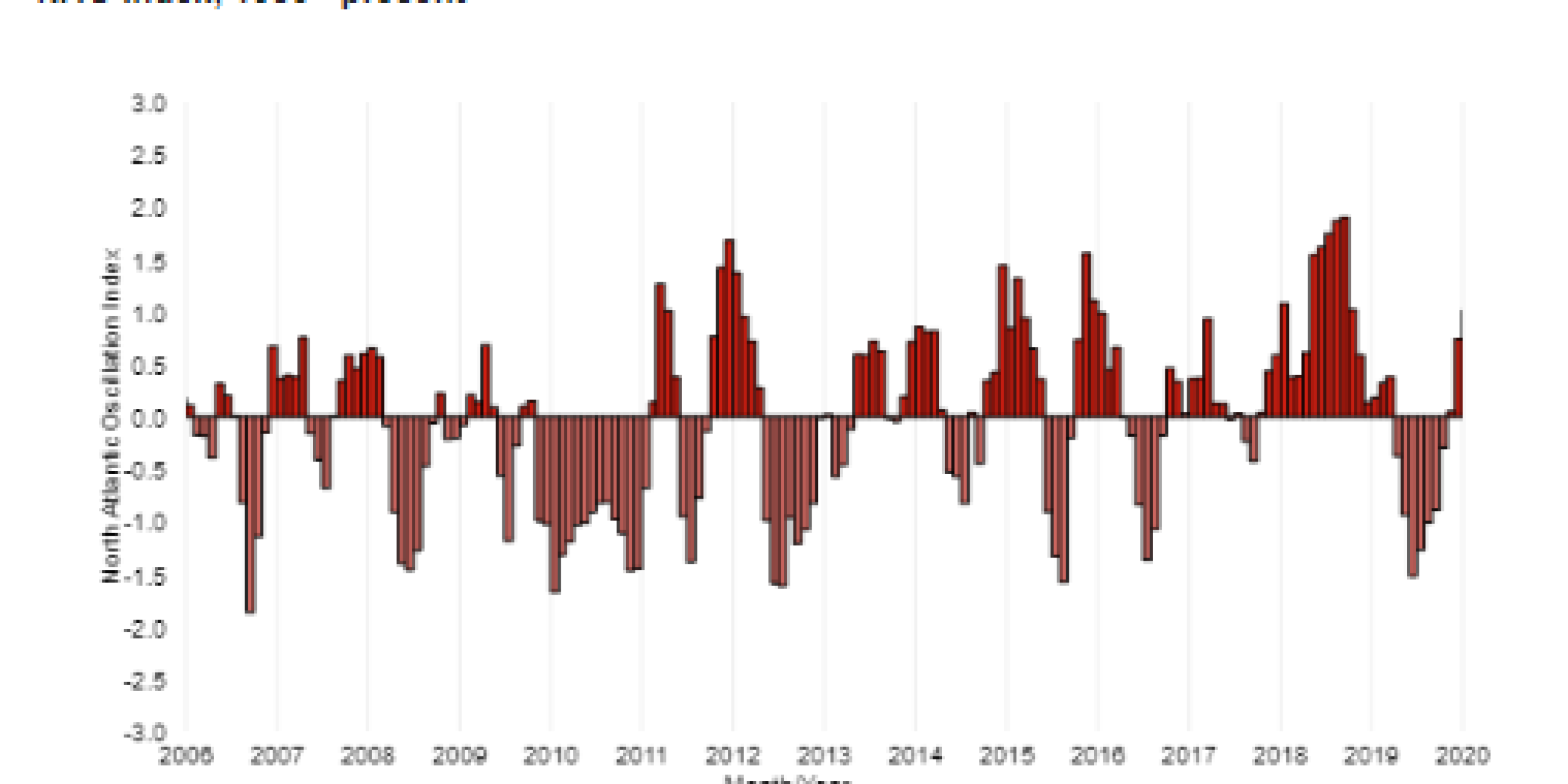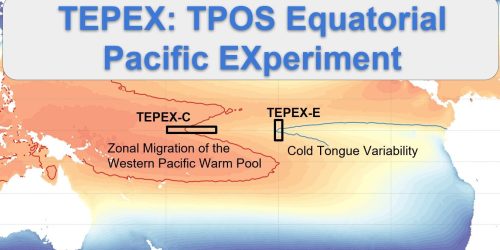Climate model projections can be hindered by complexities inherent in the climate system, and difficulty in detecting the part of the forecast that can be accurately predicted (signals) as well as constraining uncertainties (noise). These problems can be hard to fix, as climate model projections cannot be verified until there are observations. A Climate Variability and Predictability (CVP) Program-funded study introduced a new two-stage post-processing technique using hindcasts – re-forecasting of historical conditions to test how well the model’s forecast matches observations – that greatly improves decadal predictions of winter climate conditions in the North Atlantic (Europe, eastern North America). The paper was published this week in Nature. The post-processing technique adjusted variance in models to better fit observed variance, and then used model ensemble members with a North Atlantic Oscillation (NAO), an alternating pattern of higher or lower than normal air pressure, closest to the variance-adjusted forecasts. Results of this study show that the winter NAO and its effects are highly predictable on a decadal timescale. Results also demonstrate that the signal of the NAO is underestimated by most climate models, which adds to current research indicating the signal-to-noise ratio in these models is likely too small. In short, North Atlantic climate is far more predictable than models imply.
Study introduces new model processing technique, shows North Atlantic climate highly predictable











